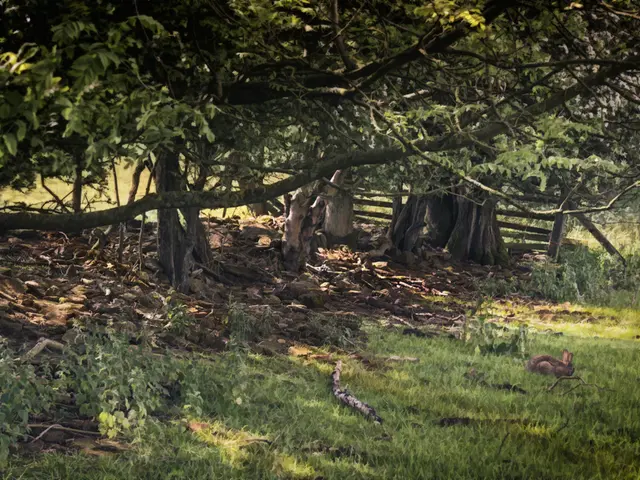"Canada's Natural Resources Minister is confident that there are buyers for additional exports of liquefied natural gas"
In a significant shift, Prime Minister Mark Carney has pledged to transform Canada into the world's leading energy superpower. This ambitious goal, outlined by the newly formed Carney government, follows the departure of the Trudeau administration.
Under the new regime, the focus appears to be on resource development and infrastructure building, as opposed to the previous government's emphasis on emissions reduction and conservation. Energy and Natural Resources Minister Tim Hodgson has expressed confidence in this pro-energy, pro-development agenda, stating that it will stimulate economic growth and nation-building across Canada.
Hodgson has been ambiguous about maintaining the same climate change objectives as the previous Trudeau government. However, he has emphasised the importance of producing low-cost, low-carbon Liquefied Natural Gas (LNG), which is expected to play a significant role in achieving this goal. In fact, Canadian LNG is believed to have the lowest carbon footprint of any produced in the world.
The Carney government is gearing up to start announcing approvals for nation-building projects early in the fall, with several key policy changes on the horizon. The repeal of the federal carbon pricing policy, the Oil Tanker Moratorium Act, and the Impact Assessment Act are among the potential changes, aimed at facilitating resource development and infrastructure projects. The government also plans to review and possibly resume cancelled pipeline projects, such as the Energy East pipeline, and reduce regulatory "red tape" on construction projects.
Hodgson has suggested that projects deemed in the national interest can be approved using Bill C-5, a bill passed by Parliament in June, which grants the government sweeping new powers to approve major projects of national interest. However, the minister has not ruled out the possibility of suspending certain policies, such as the emissions cap or tanker ban, for the sake of a project.
Canada currently has seven major LNG export projects in various stages of development, including the one major LNG export terminal up and running (LNG Canada, located in Kitimat, B.C.). If all seven projects get built, Canada will be able to ship about 50 million tonnes of natural gas per year, which is about half of the current annual export capacity of the United States.
The Canadian government's production of LNG is cleaner than that of the United States in terms of carbon footprint and is closer to Asian markets compared to the United States. This geographical advantage, combined with the lower carbon footprint, is expected to make Canadian LNG highly attractive in the global market.
Energy and Natural Resources Minister Tim Hodgson is confident there's a market for Canadian liquefied natural gas (LNG), but he has not addressed specific irritants identified by the oil and gas industry, such as Bill C-69 and the tanker ban.
This article was contributed by Rachel Aiello and Brennan MacDonald and originally appeared on News.
Read also:
- Unchecked Management of HP Dams Leads to Environmental Disaster: RTI Reveals
- Nordstrom taps prominent New York residents for their second advertising campaign in the city.
- Rivian is working on new technology to enhance the agility of its electric vehicles (EVs)
- Renault Triber Facelift Enlivens India's Multi-Purpose Vehicle Market: Overlooked 6 Notable Features that Should Have Been Included








